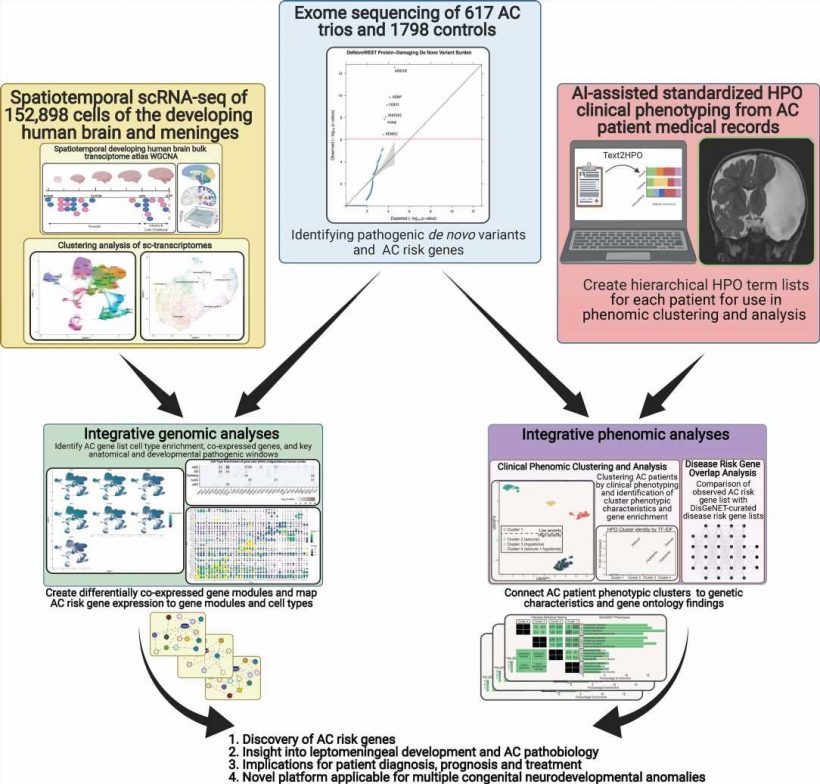
The most common type of brain cyst (arachnoid) has no known cause. New research investigating patients with these cysts has found something unexpected—a potential genetic link.
A team led by Yale University School of Medicine has gathered health history and exome data (sequences from all the protein-coding genes) from 617 trios—children with confirmed cases of arachnoid cysts and their parents—along with 1,798 trios as controls. They have published their findings in the journal Nature Medicine.
Cerebral arachnoid cysts are fluid-filled sacs that typically develop between the surface of the brain and the skull or on the middle layer of protective tissues that cover the brain, known as the arachnoid membrane. The cysts themselves are not considered harmful, but depending on size and location, there is a risk of enlarging and causing tissue damage and neurological issues. Symptoms of enlarged cysts may present as headaches, seizures, developmental delays, behavioral changes, fatigue, vision problems, head bobbing, nausea and vomiting, just to name a few.
Cerebral arachnoid cysts are most often present from birth but can also result from head trauma. They sometimes seem to appear with no apparent connection to illness or injury. They have been associated with developmental delays, epilepsy, and autism but are also present in people with no other symptoms or disorders.
Because of the location of the cysts, attempts to reduce them typically require surgically creating an opening in the skull to gain access—a drastic procedure for a condition that may or may not become a problem. Since we don’t fully understand why people get arachnoid cysts, predicting disease progression and choosing the appropriate risk-benefit of treatment is limited.
The Yale researchers examined the heath histories of the individuals in their study using a trained natural language processing algorithm that looked for clinical descriptions of the patients. The most frequent terms were; developmental delay (71.7%), craniofacial anomalies (45.7%), seizures (34.8%), enlarged head (18.1%), and autism (17.8%).
Exome sequencing data revealed that seven protein damaging de novo variants (DNVs) were highly enriched in patients with arachnoid cysts compared with healthy individuals. DNVs are genetic variants that are not directly inherited from a parent, instead showing up as the result of mutations.
With a cluster of clinical observations and links to specific genes discovered, researchers pulled at the thread by cross-referencing their variants with an online catalog of genetic disorders, OMIM, developed by the National Center for Biotechnology Information. DNVs associated with arachnoid cyst patients were all genes known to have elevated fetal brain expression, which is critical to early brain development. Considerable overlap was found with autism-related genes and, to a lesser extent, epilepsy.
In the Nature Medicine paper, researchers considered that cerebral arachnoid cysts might be an artifact of developmental defects in brain development. As such, they conclude that further understanding “may supplement current anatomically based disease classification systems with a molecular nomenclature that could improve our counseling, prognostication, and surgical treatment stratification, including decisions not to operate (first, do no harm).”
More information:
Adam J. Kundishora et al, Multiomic analyses implicate a neurodevelopmental program in the pathogenesis of cerebral arachnoid cysts, Nature Medicine (2023). DOI: 10.1038/s41591-023-02238-2
Journal information:
Nature Medicine
Source: Read Full Article






